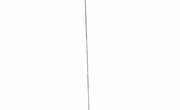
Kindergartners love to move and to make things move. Physics is not a subject just for older kids. Take advantage of younger kids' natural interests to teach lessons on force and motion. Your students already know they can swing higher by pumping their legs or slide faster wearing smooth clothing versus sitting on a rug with a rubberized backing. Lead your class in exploring force and motion with activities and look for ways to reinforce the lessons throughout the day.
Ways Objects Can Move
Your students can explore different ways objects can move. They can move quickly or slowly, in a straight or jagged line, backward or forward, upward or downward, or in circles. Give each child an object. Ask them to move it in the ways that you say. Take the class on a walk and tell them how to move, such as “(teacher’s name) says to walk in a jagged line.” Consider allowing the children to take turns telling their classmates how to move.
Push or Pull
Explain that you are going to use a force, either a push or a pull, to make objects move. Demonstrate to the class how to move the objects by pushing or pulling. Have a child stand in front of the group and whisper in her ear to either push or pull an object. The rest of the class should guess whether she made the object move by pushing or pulling. Continue letting the students take turns.
Experimenting With Force and Motion
Set up several learning stations with materials for the children to experiment with force and motion. Include ramps with various surfaces, such as smooth, sandpaper or carpeting, and items they can roll along the floor or down a ramp. Encourage them to try to move objects without touching them, such as by blowing on them. Ask them if the weight of the object makes it easier to move it on a flat surface or an inclined surface.
Magnetic Forces
Show the children different shapes of magnets and name them. Tell them that they can go to learning stations to experiment with magnets. The following day, add different objects that are attracted to magnets, and some that aren't. Allow the students to spend time exploring, and then they can sort objects according to whether the magnets attract them or not. Explain that the earth is a giant magnet; show them where the poles are and demonstrate how a compass works.
References
About the Author
Annette Strauch has been a writer for more than 30 years. She has been a radio news journalist and announcer, movie reviewer for Family Movie Reviews Online, chiropractic assistant and medical writer. Strauch holds a Master of Arts in speech/broadcast journalism from Bob Jones University, where she also served on the faculty of the radio/TV department.
Photo Credits
Digital Vision./Digital Vision/Getty Images
